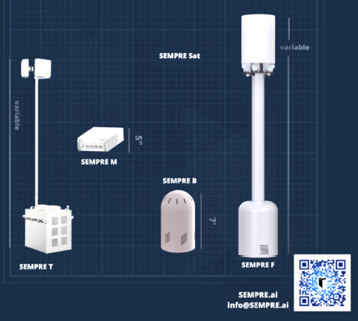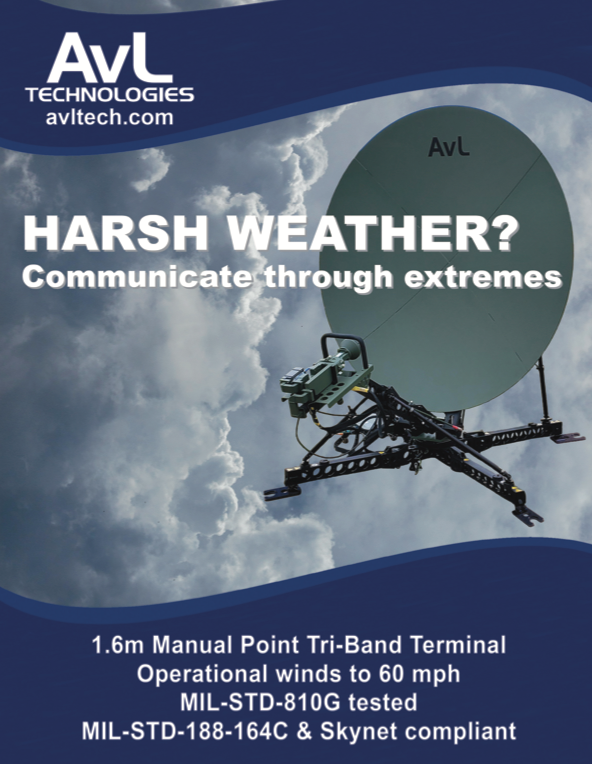Society tends to be impatient. Tweets and Instagram posts are replacing morning newspapers; musicians publish mood- setting songs rather than integrated albums, and movies bypass traditional movie theaters and head directly to home screens.
Our search for instant gratification requires multiple supporting technologies that enable low latency, high security, and a rich user experience into a hand-held or small form factor device.

While cloud computing offers many benefits, the fact is the cloud pyramid should be inverted. Data is almost always generated remotely, whether on a tractor, aircraft, or windmill. Customers then need to pay for that data to travel to a datacenter that may be located a thousand miles away. Information extracted from that datacenter is then sent back to the user, forcing the consumer to pay once again.
The market is askew when cloud providers refer to locations where data and demand reside as the “edge.” In reality, the edge is where the action is, and the cloud is some innocuous, windowless building located where power is cheap, and people are few. Cloud datacenters represent “big, juicy targets,” and from a user’s perspective, they are the true “edge.”
SEMPRE combines software and hardware technologies in multiple form factors to support user experiences in both mobile or remote operations and allow decoupling from the cloud.
SEMPRE embraces decentralized computing through small form-factor datacenters, which is also happening in space, as operators and government agencies migrate from large GEOs to constellations of smaller satellites in Low Earth Orbit (LEO).
SEMPRE’s micro datacenters use heterogeneous edge compute for Size, Weight and Power (SWaP) — efficiency. Virtualization is leveraged for multi- tenant, multi-security level operations, which makes compute and storage more affordable. Users then load their applications directly on these mobile datacenters to provide quick intelligence.
The attack surface area increases the farther data or information travels. Collocating compute and storage with data means a much lower risk for cyber-attacks.
When compared to a cloud-based solution, empirical data indicates consumers can save 90% of bandwidth cost, reduce latency by an equivalent amount, and use only one switch-hop to extract information from data.
Even though satellite bandwidth costs are decreasing, they remain high in comparison to terrestrial prices.
Some companies assume high contention ratios to pack more users in available bandwidth slots, which can lower the quality of experience, much like how some airlines use smaller seats to accommodate more travelers.
SEMPRE’s micro datacenters eliminate the noise at the source, extracting actionable intelligence locally. This ensures satellite bandwidth is efficiently used to transmit only the required high-value data. The information is one “switch hop” away, thus lowering the cyber-attack surface area. This means SEMPRE provides the user with quick intelligence that is difficult to hack.
SEMPRE can use any radio for local area access (LAN) — whether commercial, such as 5G, or tactical, such as Link16. Software-defined networking functionality based on 3GPP standards is employed to route and switch traffic, and to authenticate users. Likewise, SEMPRE can use any system for wide area access (WAN) — such as fiber, coax, microwave, or satellite.
 Figure 1
Figure 1
The same software is used to route traffic and includes an SD-WAN for traffic optimization. Both software packages represent “killer applications” residing on the virtualized network. This makes SEMPRE a perfect network “translator” between different networks, such as connecting a 5G phone to a satellite-based network, or a Link16 user to a 5G phone.
To ensure maximum security, the enclosures are ruggedized and hardened against multiple threats, including tampering, high energy bursts such as HEMP/ EMP events, and other disruptions. This means a SEMPRE node can be deployed and left behind, bringing a datacenter to the user community.
Figure 1 shows the various form factors available to SEMPRE consumers, including a software-only solution that can be loaded onto user-specific hardware. Note that the latter does not include the hardening and tamper resistance capabilities.
SEMPRE uses a proprietary system to interconnect and manage these nodes, and this is perhaps the trickiest part. Today, there are few datacenters, each with thousands of servers, and well-known management technologies exist to support this infrastructure.

SEMPRE has developed technology for the exact opposite challenge — managing thousands of datacenters with a few servers each. To the best of SEMPRE’s knowledge, this capability does not exist, and truly separates SEMPRE from other “edge” devices, such as Amazon’s Snowflake.
Finally, as thousands of satellites are deployed, providing low latency and broadband connectivity, SEMPRE marries cloud computing principles with these networks through a technological solution to bring instant gratification coupled with lower operational costs and cyber-assuredness.

Robert R. Cleave
Space is migrating away from massive GEOs; shouldn’t the ground segment do likewise?
sempre.ai
Robert R. Cleave is the Chief Operating Officer for SEMPRE. He has more than 35 years’ experience in the space industry, working as an engineer, program manager, and executive with Profit & Loss responsibility. He has delivered solutions throughout the space-related value chain, from Martian rovers to satellites, launch services, and now ground systems. He was a founder of XTAR and NewSpace Networks and has eight patents.


